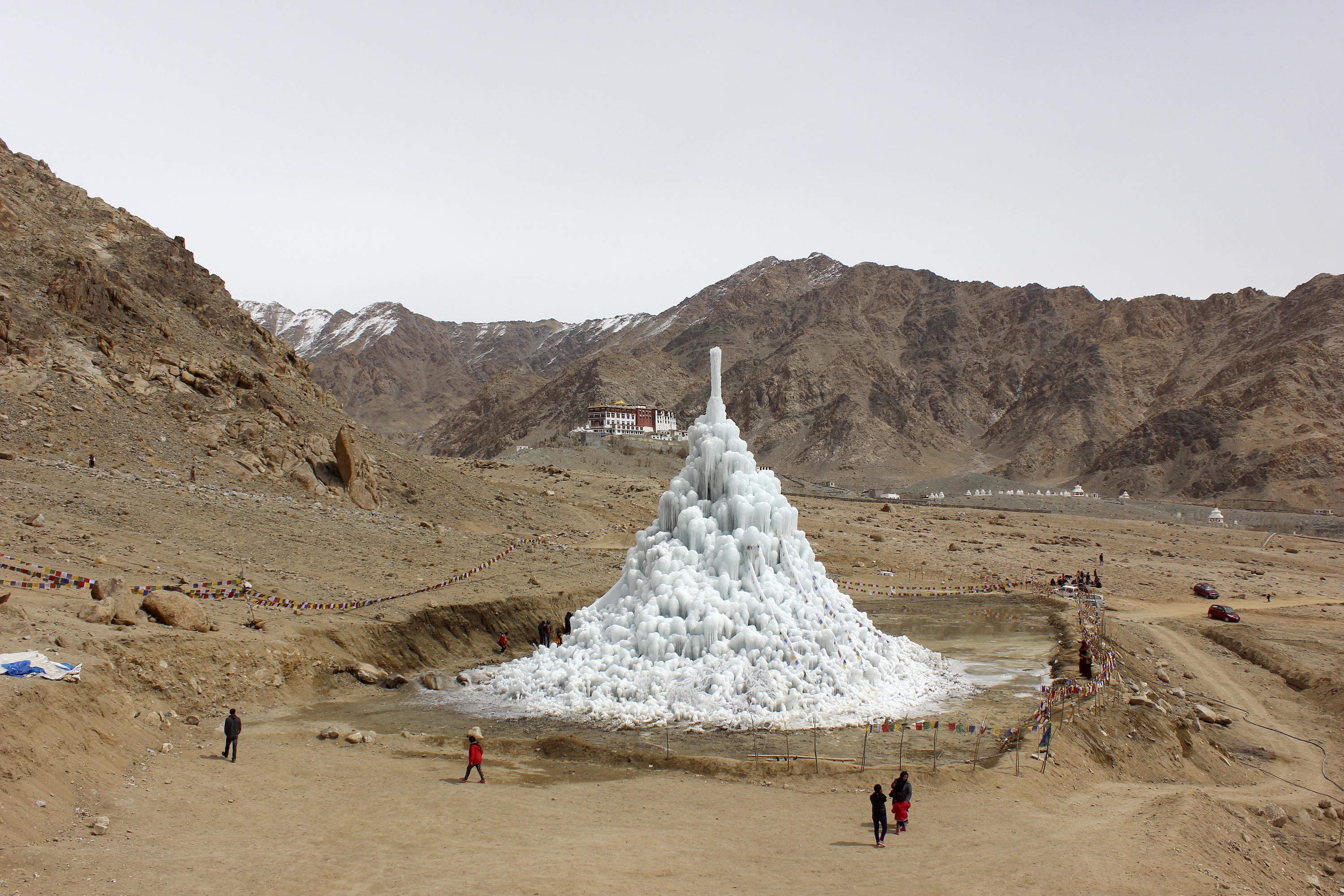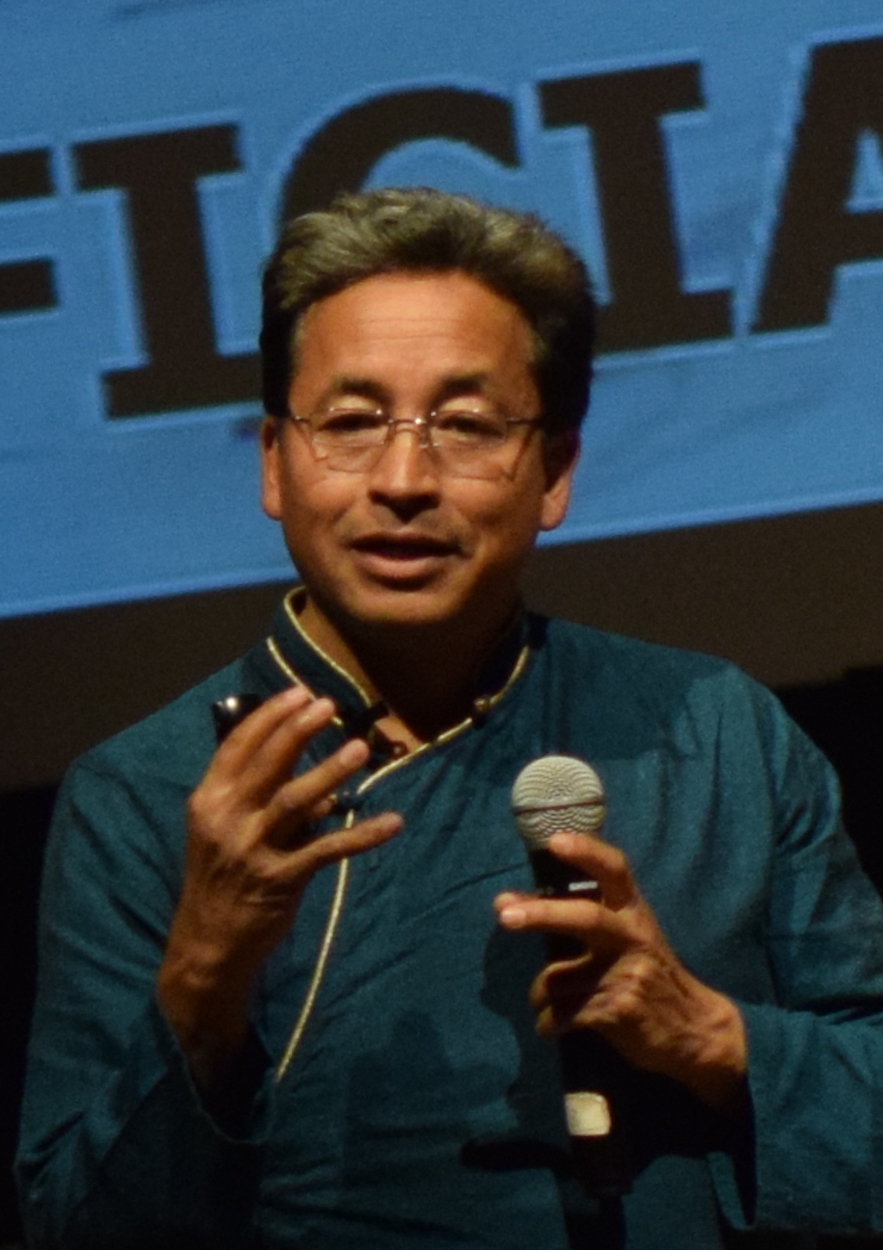The idea to create these ice stupas came from engineer Sonam Wangchuk, who was born in 1966 in Uleytokpo, Ladakh, a region under Indian administration. He was previously known (among other things) as the founder of SECMOL (Students' Educational and Cultural Movement of Ladakh)—an organization specializing in experimental, "non-Western" education and renewable energy sources. Wangchuk's life inspired Bollywood cinema; parts of his biography were used in the comedy 3 Idiots (directed by Rajkumar Hirani, 2009) about the adventures of three engineering students facing the absurdities of the traditional education system.
Wangchuk and his team use gravity and temperature differences between day and night to create the ice stupas. Using a simple pipe system, they direct water from peaks to the villages in the valleys below. The ice stupas, several meters high, melt slowly, supplying farmers with water until early summer. A beneficial side effect of erecting ice stupas is also the draining of lakes, which form as a result of the violent ripping of large fragments of glaciers, blocking the outflow of water and causing floods. According to local legends, in Ladakh, people have specialized in breeding glaciers for centuries. In the 13th century, an ice barrier was used to stop the invasion of Genghis Khan's army.
We present this piece thanks to the Museum of Modern Art in Warsaw. It is a part of the exhibition, The Penumbral Age. Art in the Time of Planetary Change, where the museum presented artistic works from the last five decades, based on observations and visualizations of the changes underway on planet Earth.
P.S. Here's more art for climate change. See Emily Carr paintings!


 Sonam Wangchuk
Sonam Wangchuk